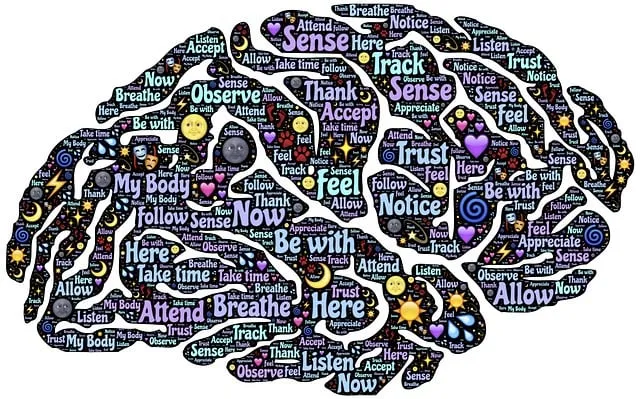Evaluating mental wellness programs, like those offered by Englewood and Kaiser, requires a multi-faceted approach. Key success metrics include reductions in anxiety and depression, improved coping strategies, and enhanced social functioning. A blend of quantitative (surveys) and qualitative (interviews, focus groups) methods provides a complete picture. Case studies and program reviews, as seen with Trauma Support Services, offer nuanced insights. Englewood should adopt these evaluation techniques to optimize its inpatient services, aligning with best practices and diverse client needs, while contrasting approaches from Kaiser highlight the importance of integrating individual therapy, group discussions, and skill-building workshops for holistic recovery.
Mental wellness program evaluation is a critical component of improving healthcare outcomes, yet it remains an area of growing interest. This article delves into the intricacies of evaluating mental health initiatives, focusing on both inpatient services and community-based programs. We compare approaches taken by Englewood and Kaiser, two prominent healthcare providers, to assess their effectiveness. By exploring key metrics and innovative techniques, we aim to illuminate best practices that can enhance mental health care, ultimately improving patient lives.
- Understanding Mental Wellness Program Evaluation: Key Metrics and Methods
- Englewood vs Kaiser: Comparing Inpatient Mental Health Services and Their Evaluation Approaches
- Effective Evaluation Techniques for Enhancing Mental Health Care Outcomes
Understanding Mental Wellness Program Evaluation: Key Metrics and Methods

Evaluating mental wellness programs is a multifaceted process that goes beyond simple satisfaction surveys. It requires a comprehensive approach to assess the program’s effectiveness and impact on participants’ lives, especially in the context of organizations like Kaiser, which offers inpatient mental health services. The key metrics involve tracking improvements in symptoms, functional abilities, and overall quality of life. Metrics such as reduction in anxiety and depression scores, improved coping strategies, and enhanced social functioning indicate successful program delivery.
Methodologically, a blend of quantitative and qualitative techniques is ideal. Surveys, interviews, and focus groups provide insights into participants’ experiences and perceived benefits. Additionally, engaging with mental health professionals through case studies and program reviews ensures a nuanced understanding of the interventions. For instance, examining crisis intervention guidelines, like those in the Mental Health Policy Analysis and Advocacy framework, alongside Trauma Support Services can offer a holistic view of how programs address acute mental health crises and long-term healing. Englewood, as a notable provider, should leverage these evaluation methods to refine its offerings, ensuring that inpatient care aligns with best practices and meets the diverse needs of its clientele.
Englewood vs Kaiser: Comparing Inpatient Mental Health Services and Their Evaluation Approaches

Englewood and Kaiser represent two contrasting models of inpatient mental health services. Englewood focuses on a comprehensive approach that integrates various therapeutic modalities within a supportive environment, emphasizing individual therapy, group discussions, and skill-building workshops designed to enhance self-esteem and coping skills. Their evaluation methods are multi-faceted, involving pre-and post-treatment assessments, patient feedback surveys, and continuous quality improvement initiatives to ensure the mental wellness coaching programs’ development and effectiveness.
In contrast, Kaiser adopts a more structured and data-driven approach, utilizing advanced technologies for monitoring patient progress in real-time. Their evaluation strategies heavily rely on quantitative measures, such as standardized assessment tools, to gauge improvements in symptoms and overall mental health status. While this method provides tangible metrics for success, it may overlook the qualitative aspects of healing, including patients’ personal growth, newfound resilience, and improved coping mechanisms developed through engaging activities like art therapy or music sessions, which are integral components of many self-esteem improvement initiatives.
Effective Evaluation Techniques for Enhancing Mental Health Care Outcomes

Englewood and Kaiser’s approach to mental health care has evolved significantly, driven by the need for effective evaluation techniques to enhance treatment outcomes. Going beyond traditional measures, modern programs integrate diverse methods to cater to the complex nature of mental wellness. For instance, Englewood’s holistic assessment model includes not only clinical evaluations but also patient-reported outcomes and feedback from support staff, offering a comprehensive view of recovery progress. This multi-faceted approach ensures that Cultural Sensitivity in Mental Healthcare Practice is at the forefront, recognizing the impact of cultural background on treatment effectiveness.
Furthermore, programs like Kaiser’s emphasize the importance of Social Skills Training and Self-Esteem Improvement as core components of evaluation. By incorporating these aspects, mental health care providers can better understand patients’ social dynamics and interpersonal challenges, tailoring interventions to address them effectively. This tailored approach not only improves symptoms but also fosters better patient engagement and satisfaction with care.
In evaluating mental wellness programs, understanding key metrics and diverse methods is essential. Comparing institutions like Englewood and Kaiser offers insights into contrasting inpatient mental health services and evaluation approaches, highlighting the significance of tailored techniques for enhancing care outcomes. By adopting effective evaluation strategies, mental health professionals can optimize resources, improve patient outcomes, and foster a more holistic approach to treatment.






